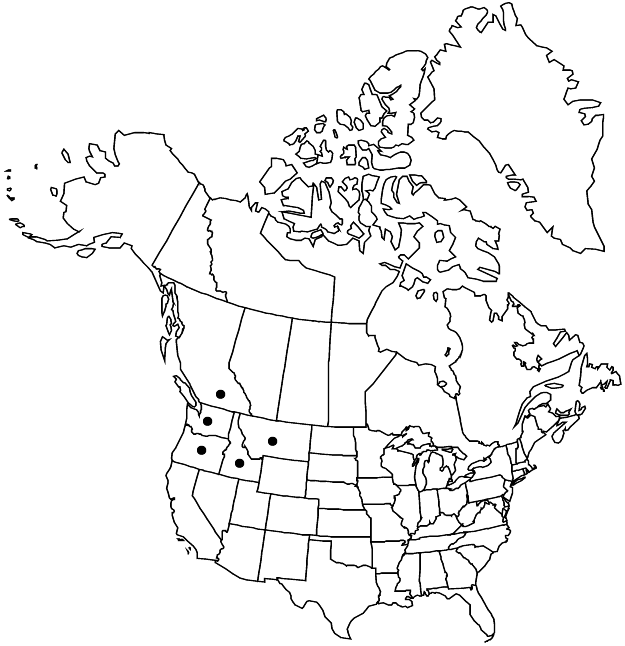Silene spaldingii
Proc. Amer. Acad. Arts 10: 344. 1875.
Plants perennial, viscid; taproot stout; caudex branched, woody, producing several to many shoots. Stems erect, branched, leafy, 20–60 cm, villose-tomentose, viscid-glandular. Leaves 2 per node, connate proximally, sessile, largest in mid-stem; blade lanceolate, 3–7 cm × 5–15 mm, apex acute, glandular-tomentose throughout. Inflorescences open, leafy cymes, bracteate, viscid and glandular-tomentose, branches ascending, mostly floriferous, flowers terminal and at distal nodes; bracts leaflike, 5–30 mm. Pedicels shorter than calyx. Flowers: calyx obscurely 10-veined, tubular-campanulate, 10–15 × 4–5 mm in flower, becoming clavate and 15–20 × 6–8 mm in fruit, narrowed toward base around carpophore, herbaceous, viscid-pubescent, veins more distinct at base, without conspicuous pale commissures, lobes narrowly lanceolate, 3–6 mm, margins very narrow, membranous, apex blunt; corolla greenish white, clawed, claw equaling calyx, widened distally, limb emarginate, 2 × 4 mm, appendages 4 (–6), ca. 0.5 mm; stamens equaling petals; styles 3, equaling petals. Capsules ellipsoid, slightly longer than calyx, opening by 6 teeth; carpophore 1.5–2.5 mm. Seeds yellowish-brown, winged, reniform, ca. 2 mm, rugose; wing broad, wrinkled. 2n = 48.
Phenology: Flowering summer.
Habitat: Mixed prairie and ponderosa pine forests in swales and on dry hillsides
Elevation: 800-1100 m
Distribution

B.C., Idaho, Mont., Oreg., Wash.
Discussion
Of conservation concern.
Selected References
None.